1. Third Session
1.1. Step (9): Review of Learning Objectives
1.1.1. 1- Calculus cholescystitis and managment
1.1.1.1. Def. chronic inflammation of the gallbladder + stones
1.1.1.1.1. Main cause; blockage of the CBD
1.1.1.1.2. If acalculus; due to narrowing of the biliary tree
1.1.1.1.3. complication: fistula, perforate, obstruction, porslain ( can be cancerous )
1.1.1.1.4. Signs & symptoms: Pain after eating, RUQ pain, radiating to the right shoulder, Tender abdomine, nausea, vomiting , sweating
1.1.1.1.5. Types of stones: cholestrol + pigment
1.1.1.1.6. Diagnostic: US,
1.2. Step (10): Management
1.2.1. Pain; NSIAD + Opioids
1.2.2. Nausea + vomitting: ANTI-EMETICS
1.2.3. Febrile: anti-emetics
1.2.4. Broad-spectrum antibiotics
1.3. Step (11): Feedback & Resources
2. Second Session
2.1. Step (6): Review of Learning Objectives
2.1.1. 1- DDx of epigastric pain with jaundice: biliary diseases( gallstone"cholilithiasis", bile colic ) + pancreatic cancer
2.1.1.1. Heptitis
2.1.1.2. Cirrhosis
2.1.1.3. Acute pancreatitis
2.1.1.4. Biliary disease; RUQ and jaundice
2.1.1.5. Sickle cell crisis
2.1.2. 2
2.1.2.1. Biliary colic
2.1.2.2. Jaundice with pain & painless jaundice
2.1.2.3. Weight loss
2.1.2.3.1. Because of avoiding food
2.1.2.4. Bloating, flatus, dyspepsia
2.1.3. 3
2.1.3.1. 5 y survival > 5%
2.1.3.2. 4th leading cause of death among all cancers
2.1.3.3. Mostly in black people
2.1.3.4. fibers > reduce the risk ... fat > increase the risk
2.1.3.5. Investigation: US, CT, ENDOSCOPIC ultra,
2.2. Step (7): Gathering Information & Inquiry Plan
2.2.1. History
2.2.2. Physical Examination
2.2.2.1. Weight: 70, Height:150 cm
2.2.2.2. HR:100
2.2.2.3. BP: 170/100
2.2.2.4. RR:23
2.2.3. Investigation
2.3. Step (8): Diagnostic Decision
2.3.1. Mechanism
2.3.2. Presentation
2.3.3. Supporting Data
3. First Session
3.1. Step (1): Identifying Difficult Words & Cues
3.1.1. Difficult Words
3.1.1.1. plumpish
3.1.1.2. Peering
3.1.1.2.1. Staring
3.1.1.3. put up with it
3.1.1.3.1. Cope
3.1.1.4. Incapacitated
3.1.1.4.1. NOT able to do
3.1.2. Cues
3.1.2.1. Plumpish
3.1.2.2. Pain at the top of the pt stomach
3.1.2.2.1. Associated with the meal ( 1-2 h after meal )
3.1.2.3. 82 F
3.1.2.4. Similar episodepreviously but was tolerated
3.1.2.5. eyes > turning to yellow
3.1.2.6. Independent and taking care of her husband; now it is affected ( her care )
3.2. Step (2): Problem Formulation
3.2.1. An 82 year old female presenting with upper abdominal pain radiating to her back and chest, usually an hour or two after meal. She is also complaining of her eye being so yellow.
3.3. Step (3): Hypotheses Generation
3.3.1. Biliary system is affected; Cholecystitis, cholelithiasis
3.3.2. Pancreatic disease; Pancreatic cancer ( Pt age ) + Chronic pancreaitis
3.3.3. Yellowish discoloration; Prehepatic> uncojugated ... Hepatic; both ... Post-hep: Conjugated
3.4. Step (4): Hypotheses Organization
3.4.1. 1- Heptobiliary 2- Pancrease
3.5. Step (5): Learning Objectives
3.5.1. 1- To list the DDx of Epi-Gastric pain with Jaundice
3.5.2. 2- To Identify the clinical manifestation of biliary disease pathology
3.5.3. 3- To identify what is pancreatic cancer ( Def. , risk factors, Manifestation, investigation )
